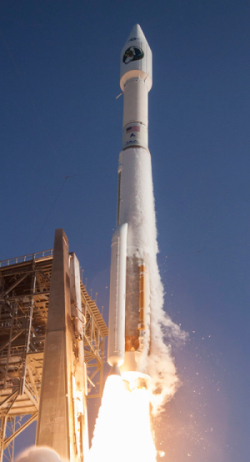At a meeting of NASA’s Advisory Council yesterday a NASA official estimated that SpaceX will probably spend about $300 million on its Dragon mission to Mars.
Asked by the committee how much SpaceX was spending, Reuter indicated that the company’s investment was 10 times that of NASA. “They did talk to us about a 10-to-1 arrangement in terms of cost: theirs 10, ours 1,” he said. “I think that’s in the ballpark.” Given NASA’s investment, that implies SpaceX is spending around $300 million on Red Dragon.
SpaceX has not disclosed its estimated cost of the mission, or how it will pay for it. “I have no knowledge” of how the company is financing the mission, Reuter said when asked by the committee.
I suspect that the guess is significantly wrong. NASA is providing $32 million. SpaceX plans to charge customers $90 million for a single Falcon Heavy launch, which means its cost for that launch is likely half that, say $45 million. That adds up to $77 million. The cost for a Dragon capsule is not even close to $223 million, which is what remains if NASA’s guess is right, which based on this rough estimate I seriously doubt. I would bet that a single Dragon probably costs far less than $20 million. Remember, they are nothing more than basic manned capsules, and SpaceX is building enough of them to almost have an assembly line going.
So, let’s round up and say that the cost for the mission is really about $100 million (including NASA’s contribution). Other costs, such as the staff to run the mission for at least a year, will increase this cost, but not enough to bring the total to NASA’s guess of $300 million. I suspect that SpaceX will not spend anything close to $100 million of its own money for this Dragon mission to Mars.
All in all, this amount of investment seems reasonable, based on the scale of costs in the launch industry. And SpaceX’s willingness to invest some of its own money for this mission is probably wise. In publicity alone it is priceless.

